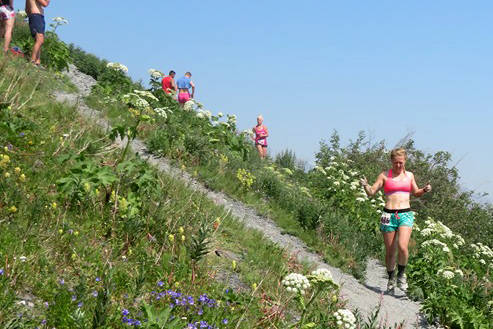In their extravagant dresses and tightly wound curls, my cousins would dance their weekends away.
Irish stepdancing is marked by intricate footwork coupled with a stoic upper body. When they danced, I would watch the curls bounce and bounce, their legs moving in methodical chaos and their arms still by their side and would think, “I could never do that.”
They were able to travel the world through dancing and make trips out of of every Feis, the traditional Gaelic arts and culture festivals that would take them to cities across the country and Ireland. They could make wild flailing of their legs beautiful, thoughtfully taking each step and connecting it all in an elegant flow.
Meanwhile, I was kicked out of ballet lessons because I didn’t have the grace.
I always thought that I would get some as I grew older, find a way to float when I walked or move my body in a way that was more like a butterfly and less like a bulldozer. But, the grace never came.
When I dance, I flail. Actually, when I do most things, I flail.
Weekly throughout the summer, I would climb Mount Marathon with friends, training for the iconic Fourth of July race and find my body fast flailing the whole way down the mountain.
As a second-time racer, I was looking for any tips or tricks I could use to shave off time for a personal record. Lucky for me, I got a lot of them from Fred Moore, who ran his 50th consecutive Mount Marathon Race this year.
Training with him up the racer’s trail, I would fall behind while he followed his routes and passed each tree, bush and rock as if they were old friends.
There is not much grace in climbing a mountain; it’s mostly brute force, but at the summit when all of Seward is below you and the real hard part is behind you, it’s easy to feel lithe.
And that lissomeness is amplified on the downhill. With the shale of Mount Marathon below your feet, runners descending the peak seem to float from the top down.
On one trip down the racer’s trail, my legs were reaching far ahead for any soft spot of scree to slide into and my hands were bouncing in the air near my shoulders helping to maintain my balance.
Fred was below me, precisely placing each foot with his arms at his side. In the methodical chaos of descending Mount Marathon, he was dancing.
He stopped ahead of me to give me some advice.
“Kick your feet out and back at an even pace, so you know when and where each step is going to land. Have them kick in front of you and come back in.”
So … stop flailing?
“I could probably do that,” I said.
My arms were still all over the place, an Irish dancer’s worst nightmare, but I found my legs kicking out and pulling back in with a rhythm.
I kept thinking about each step, about where it needed to land and the step that would follow suit. After a few dozen pairs of steps, I was bouncing along down and into the shale, going down the mountain faster than I ever had before, toeing the line between flailing and floating.
It wasn’t graceful, by any definition, but I’m getting there.


